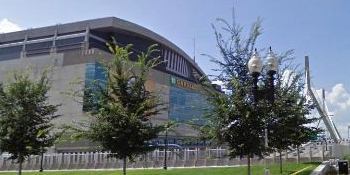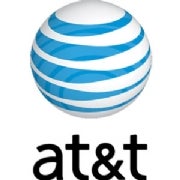Ever been to a sports game and tried to send a text message, upload a photo to Facebook, or send a tweet about that awesome play that just happened? If so, you may have been left frustrated by the overcrowded network that prevented that all-important message from making your friends jealous.
 TD Garden (Source: Google Maps)
TD Garden (Source: Google Maps)AT&T is looking to address the challenge of high-density cell use areas by installing Distributed Antenna Systems (DAS) at stadiums and other places where crowds congregate frequently, such as airports, hotels, casinos, and conventions centers. The latest installation: at TD Garden in Boston, where the Boston Bruins and Boston Celtics play.
"We literally take what would be at the base of a cell tower, three big antennas covering a radius around the stadium, and we shrink that down with lower-powered antennas to a section in the park of a couple of hundred yards, turning it into little cell sites sitting side by side by side," said Chad Townes, AT&T vice president of the antenna solutions group. As a result, Facebook will be updated, tweets will be sent out and text messages will flow.
FENWAY'S NETWORK: At 100 years old, Fenway Park brims with new technology
PAYDAY: Tech's $20 million CEOs
The basic idea is to break up the service into smaller bite-sized chunks that are easier for the network to handle. The DAS works by splitting the area that needs additional coverage into multiple zones, ranging from a dozen up to multiple dozens, depending on the density of the population. Each section then gets its own antenna, which is tied into a base station radio that generates 3G and 4G frequencies. A handful of antennas are connected and share an Ethernet connection into the AT&T core network. "It's the same thing as an antenna on the top of a tower, just on a smaller scale," Townes says. By using more than a dozen individual antennas around the stadium, it prevents the 3G and 4G traffic clogging up a local cell antenna.

The DAS is also a neutral host system so the antennas around the stadiums can handle frequencies from a variety of carriers. So, if for example Verizon was interested in plugging into the system, the company would only need to install a base station to generate the radio frequencies to send out to customers and pay AT&T a royalty fee for using the core fiber piping. "If we have a lot of customers in one place all the time, it makes a lot of sense," Townes says.
AT&T has already launched DAS at the Superdome in New Orleans, Lucas Oil Stadium in Indianapolis (host of the most recent Super Bowl), and, of course, at AT&T park in San Francisco, home of the San Francisco Giants baseball team. A similar architecture can be used in an office building setting, for example, creating a single antenna that covers two or three floors of a building.
Other venues have brought high-tech accessories to the sports stadium, such as T-Mobile Renting Tablets at the Angels venue in Los Angeles, and the University of Phoenix beefed up its wireless when it hosted the Super Bowl.
Network World staff writer Brandon Butler covers cloud computing and social collaboration. He can be reached at BButler@nww.com and found on Twitter at @BButlerNWW.
Read more about anti-malware in Network World's Anti-malware section.
Source: http://feeds.pcworld.com/click.phdo?i=84e5d0f826162fa5205c6305a52f1980
bose music bose 141 bose ipod player bose remote codes bose parts
No comments:
Post a Comment